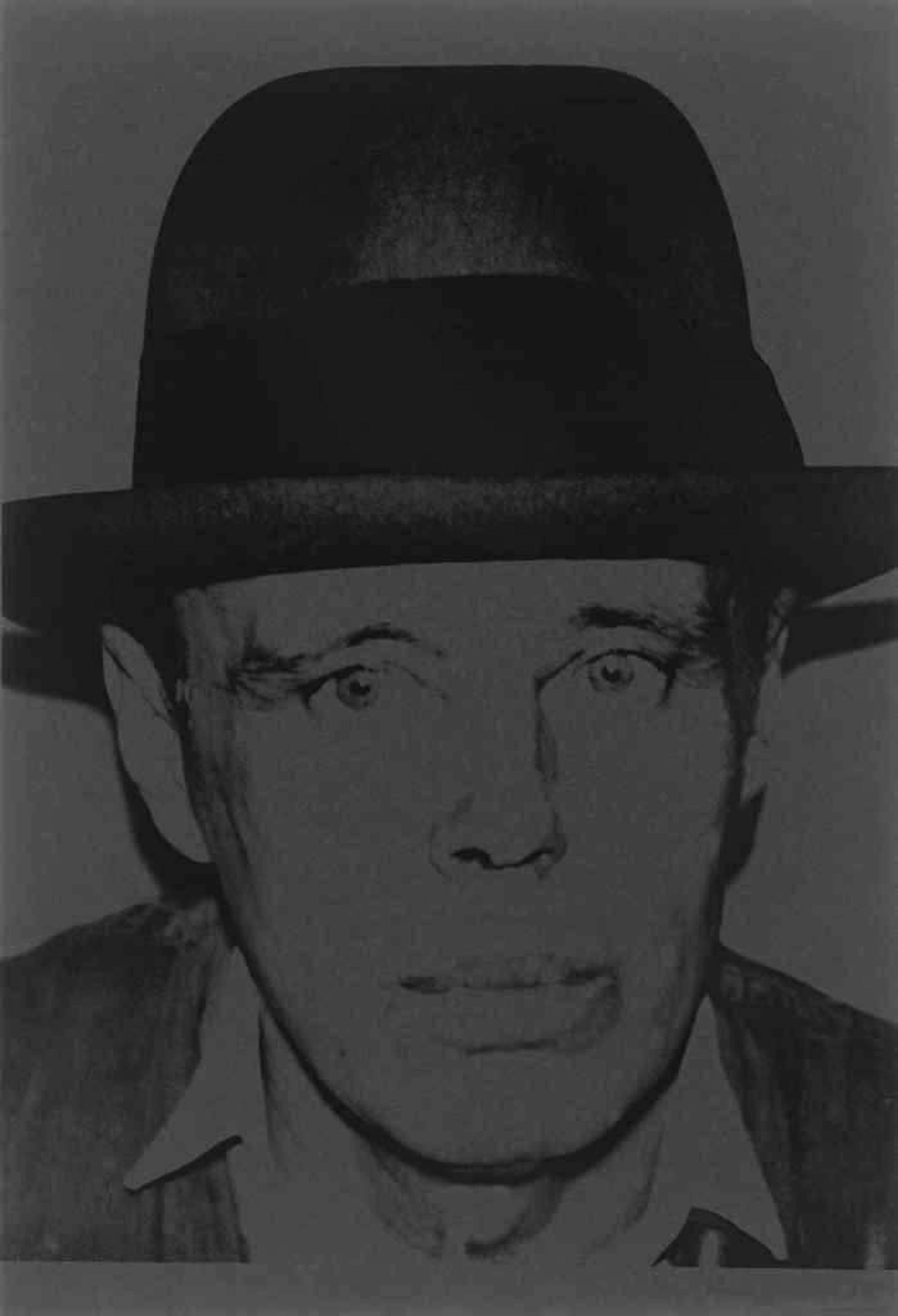
Joseph Beuys (F. & S. II.246)

Joseph Beuys (F. & S. II.246)
Signed Print
Andy Warhol
£11,500-£17,000
$23,000-$35,000 Value Indicator
$21,000-$30,000 Value Indicator
¥110,000-¥160,000 Value Indicator
€13,000-€19,000 Value Indicator
$120,000-$180,000 Value Indicator
¥2,390,000-¥3,530,000 Value Indicator
$15,000-$23,000 Value Indicator
There aren't enough data points on this work for a comprehensive result. Please speak to a specialist by making an enquiry.
112 x 76cm, Edition of 90, Screenprint
Auction Results

Track auction value trend
Meaning & Analysis
Produced in 1980, Andy Warhol’s Joseph Beuys (F. & S. II.246) depicts the German artist and theorist Joseph Beuys. His striking light eyes peer out at the viewer from under his brimmed hat. The signed screen print from an edition of 90 diverges from Warhol’s characteristic and colourful depictions of celebrities. Unlike his poppy depictions ofMarilyn Monroe, grey dominates this low-contrast image of Beuys taken from a 1979 polaroid photograph.
Warhol produced multiple editions from a single polaroid which make up his Joseph Beuys series. This particular image reads more like a portrait than the majority of the series. Joseph Beuys (1921-1986) emerged post-war as a sculptor before branching into performance art, theory, activism, and teaching. He held particular interest in shamanism and often incorporated shamanist rituals into his happenings and performance art. While this diverges from Warhol’s interest in fame and consumerism, the two artists held mutual respect. Sir Normal Rosenthal noted, Beuys was “the greatest European artist of his time,” making his depiction by the American icon Andy Warhol all the more exciting.